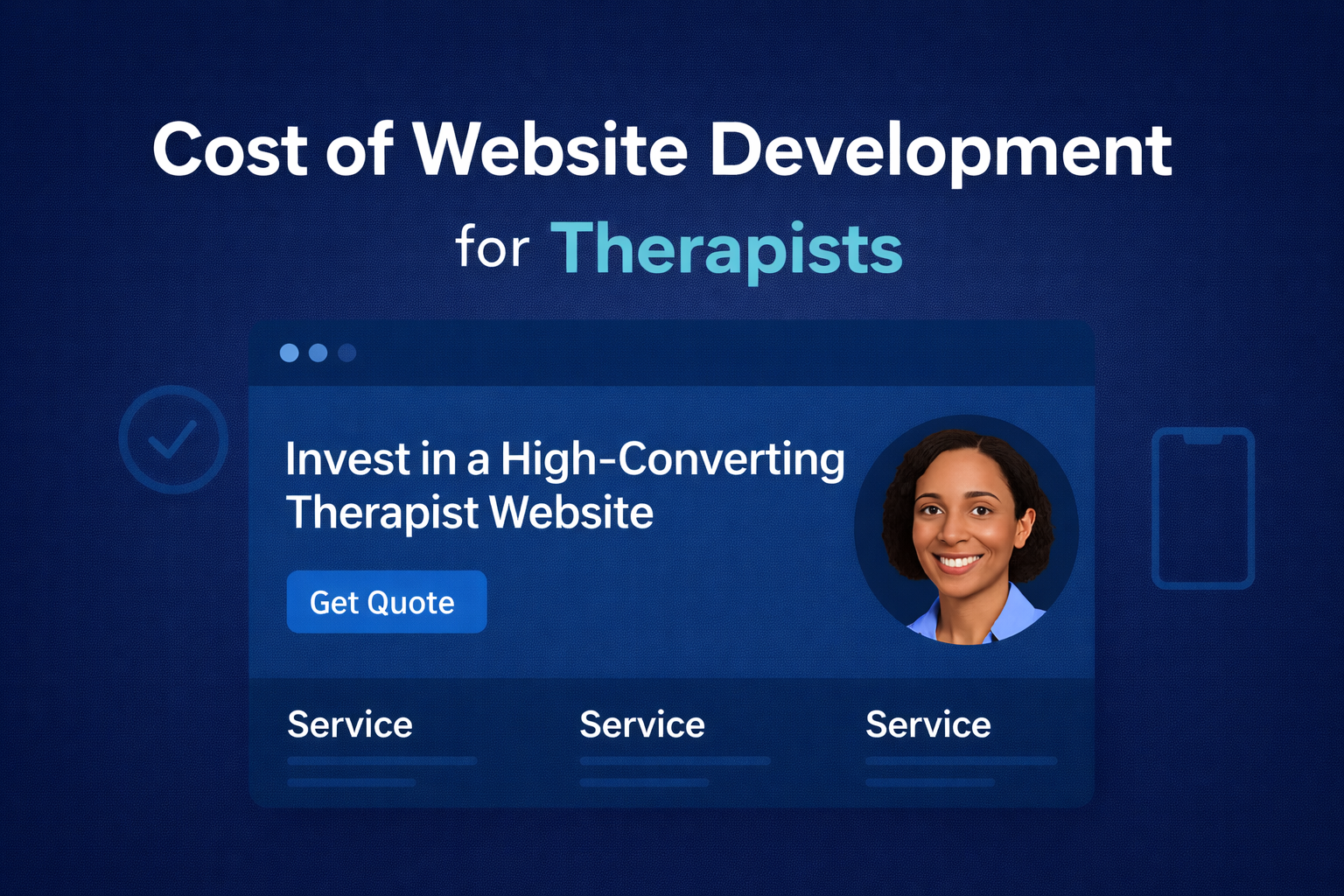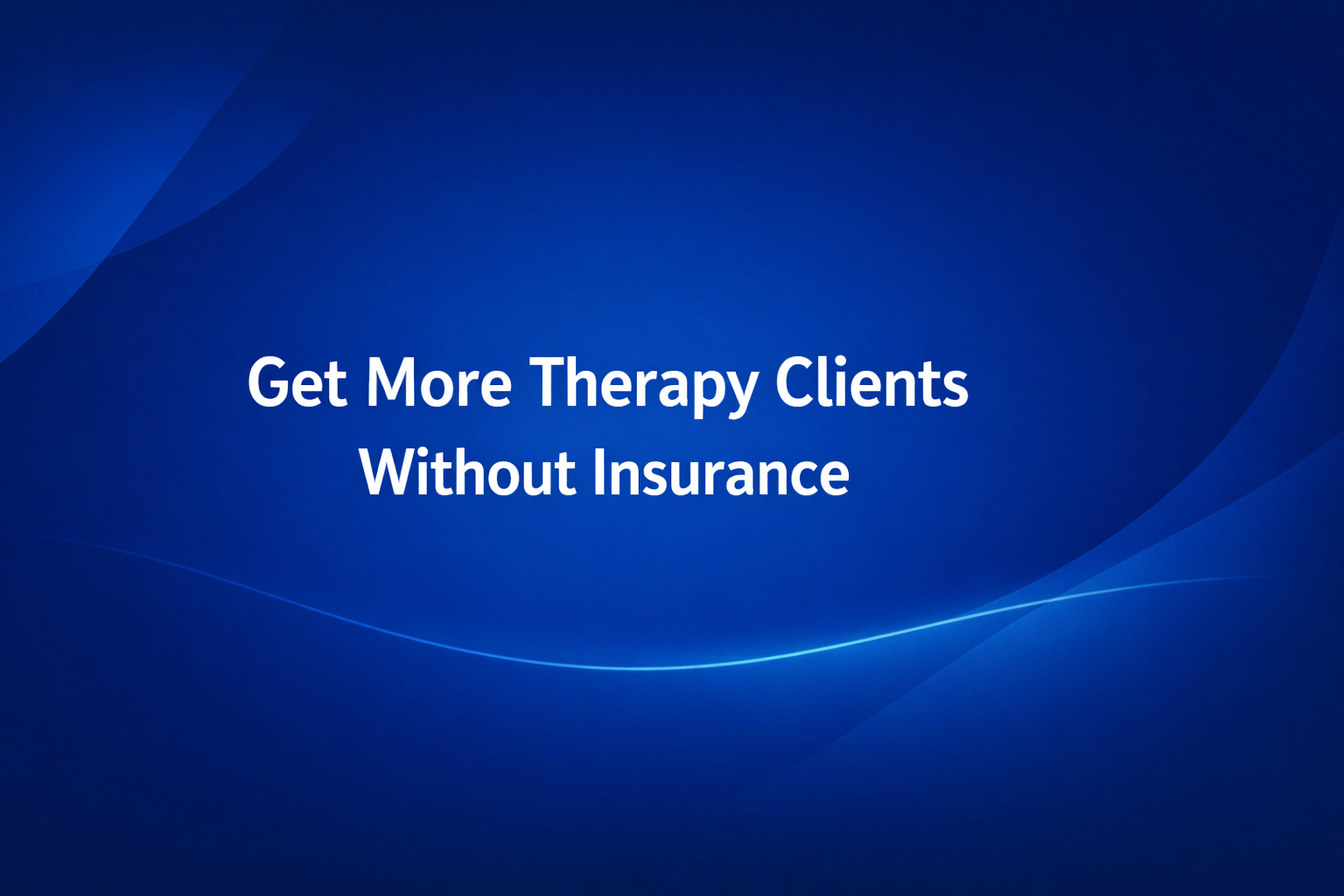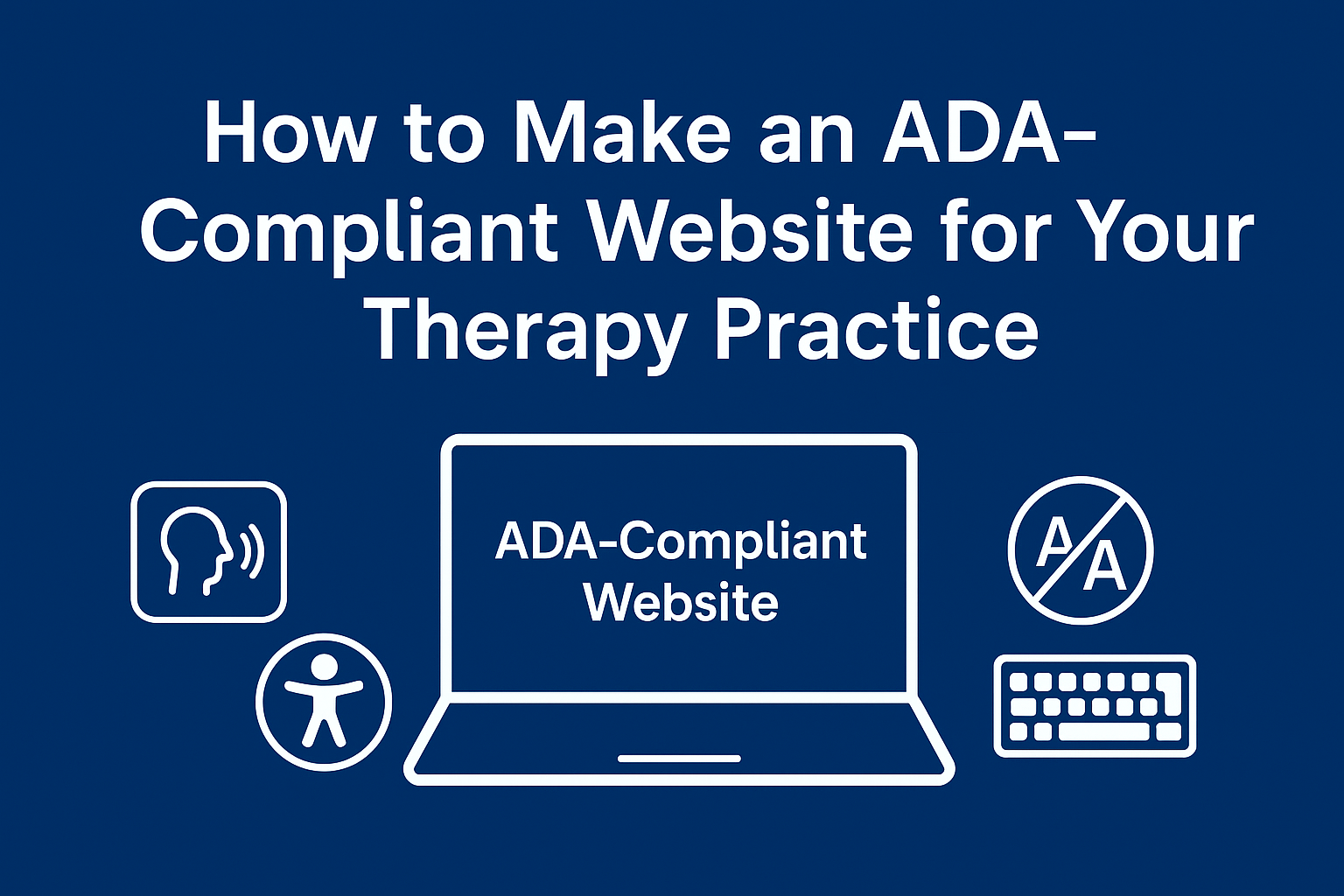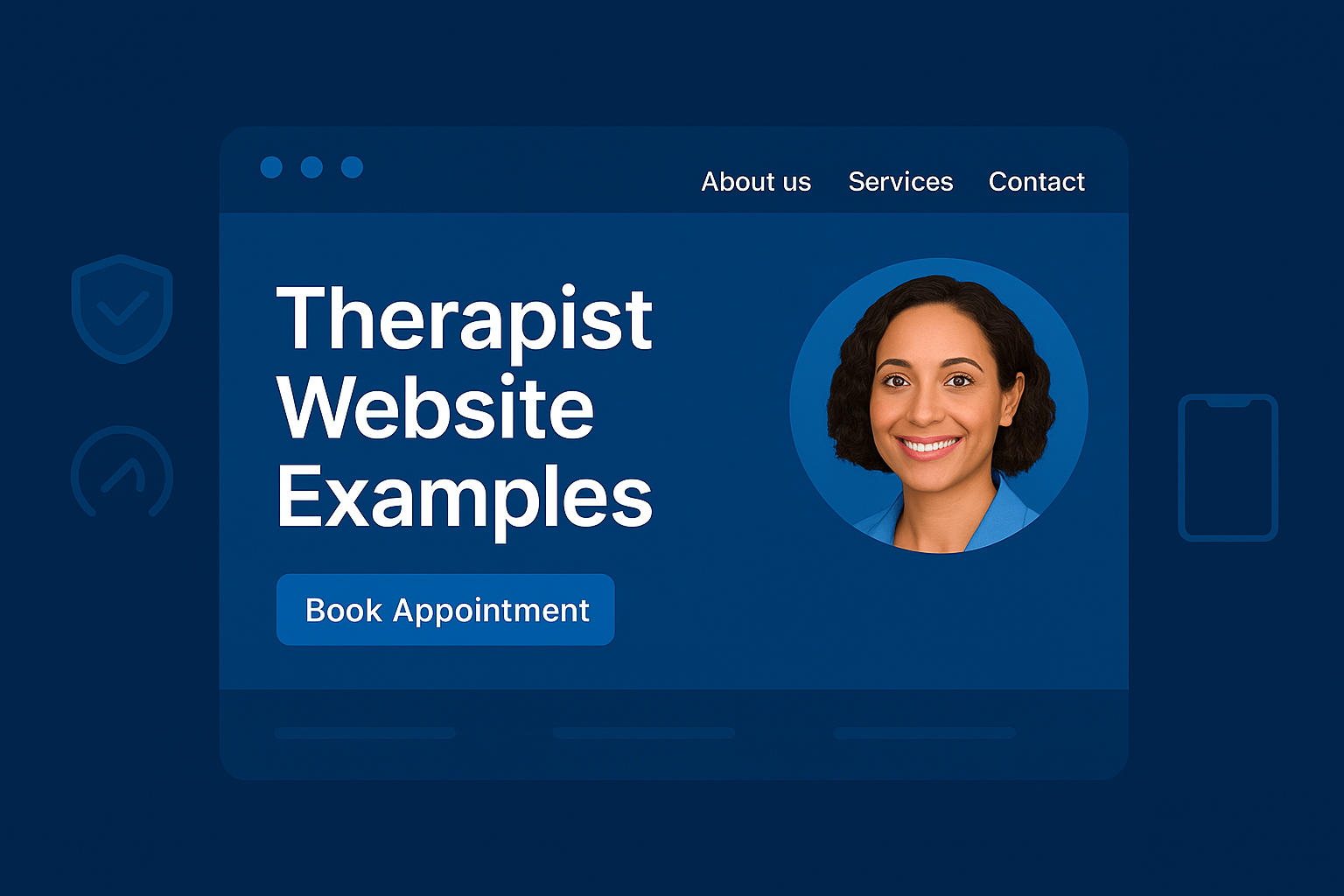As mental health practices evolve in a digital-first world, your website isn’t just a tool—it’s your practice’s front door, a reflection of your care, and a growth engine. Website development for mental health therapists is shifting fast in 2025, driven by technology, client expectations, and the need to stand out. At Mental Health IT Solutions, we’re tracking these trends to help therapists like you build websites that connect, engage, and thrive. This guide dives into the top website development trends for mental health practices, offering practical insights to elevate your online presence—whether you’re welcoming clients in-person or expanding through teletherapy.
Why Trends Matter for Your Practice
Your website is more than a digital brochure—it’s where clients form their first impression, decide to trust you, and take action. In 2025, mental health practices face a landscape where clients demand seamless access, personalized experiences, and tech-smart solutions. Falling behind means blending into the noise, while riding these trends puts you ahead, boosting visibility and bookings. Website development for mental health therapists is about meeting clients where they are—online, on their phones, seeking support—and these trends are your roadmap to doing it right.
Staying current isn’t just tech-savvy—it’s client-centric. A website that taps into 2025 trends can transform your practice, making it a beacon for those who need you most. Let’s explore what’s shaping the future of your online presence.
Top Website Development Trends for 2025
Here’s a deep dive into the trends driving website development for mental health practices, blending narrative insights with actionable pointers.
Trend 1: AI-Powered Personalization
Artificial intelligence is no longer a sci-fi buzzword—it’s a game-changer for therapist websites in 2025. AI can tailor your site to each visitor, offering a personal touch that feels like a warm welcome. Imagine a client landing on your page and seeing a greeting that matches their time of day—“Good evening, let’s find calm together”—or content that shifts based on their needs, like spotlighting teletherapy for someone browsing late at night. This isn’t just fancy tech; it’s about making clients feel seen, boosting engagement, and nudging them toward booking.
- Chatbots That Care: Add an AI chatbot—“How can I support you today?”—to guide visitors or answer FAQs 24/7.
- Dynamic Content: Use AI to tweak headlines or service highlights—stress relief for one, couples work for another—based on user behavior.
- Booking Smarts: Pair AI with scheduling—suggest times when clients hesitate—our booking setup guide shows how.
- Keep It Human: Balance tech with your voice—AI assists, but your warmth seals the deal.
AI personalization turns your site into a responsive ally, not a static page—clients stick around when they feel it’s built for them.
Trend 2: Mobile-First Design With a Therapy Twist
Mobile isn’t just king—it’s the whole kingdom in 2025. Most clients will find you on their phones, scrolling during a break or late at night. A mobile-first website isn’t optional—it’s essential, and for therapists, it’s about more than resizing. It’s about a design that soothes on small screens, with big buttons, fast loads, and a layout that says “help is here.” Test it with Google’s Mobile-Friendly Test—if it’s not seamless, you’re losing clients.
- Thumb-Friendly Navigation: Menus at the bottom—easy to tap, no stretch.
- Calm on the Go: Soft colors and simple fonts—readable in a stressful moment.
- Speed Boost: Compress images with TinyPNG—under three seconds, per our site performance guide.
- Teletherapy Ready: “Book a virtual session” front and center—mobile clients love flexibility.
A mobile-first site isn’t just tech—it’s therapy in their pocket, making your practice the one they choose.
Trend 3: Interactive Wellness Features
Static sites are out—interactive is in. Clients want more than words in 2025; they want tools they can use right away. Think mini-quizzes—“How’s your stress today?”—that offer instant tips, or a breathing exercise widget that calms them on your homepage. These features don’t just engage—they position you as a proactive helper, not just a name on a screen. Add a mood tracker or a quick meditation link—our content crafting tip can spark ideas.
- Quick Tools: Embed a 60-second breathing guide—clients try it, trust grows.
- Self-Assessments: “Check your calm” quiz—fun, fast, and leads to your services.
- Resource Hooks: Link to a free “Stress Less” PDF—capture emails, build connection.
- Keep It Light: Simple, not overwhelming—enhance, don’t distract.
Interactive features turn your site into a wellness hub—clients stay longer, and you stand out as their go-to.
Trend 4: Voice Search Optimization
“Hey Siri, find me a therapist nearby”—voice search is booming in 2025, and your website needs to answer the call. Clients use smart speakers or phones to seek help, especially when stressed or multitasking. Optimize for natural speech—“best anxiety therapist near me” or “teletherapy options now”—and you’ll pop up first. It’s not just keywords; it’s how people talk, and that’s your edge.
- Conversational Phrases: Add “How can I find peace today?” to your content—voice loves it.
- Local Boost: “Therapist in [your city]”—pair with Google My Business for proximity wins.
- FAQ Power: “What’s teletherapy like?”—answer in plain talk, rank higher.
- Test It: Ask your phone—does your site show up? Tweak until it does.
Voice search puts you in clients’ ears—literally—making your practice the one they hear first.
Trend 5: Enhanced Security and Trust Signals
In 2025, trust is non-negotiable—clients share sensitive info, and your site must scream safety. Beyond SSL (https://), show you’re legit with trust badges—“HIPAA Compliant” or “Secure Payments”—and a privacy page that’s clear, not buried. Teletherapy logins demand extra layers—think two-factor authentication. A secure site isn’t just tech—it’s a promise, and that wins clients.
- Lock It Down: SSL from your host—check with your provider, it’s often free.
- Show Off: Add a “Trusted by 500+ Clients” badge—proof builds confidence.
- Privacy Up Front: “Your data’s safe with me”—link to a simple policy.
- Backup Plan: Weekly with UpdraftPlus—our site performance guide explains why.
Security isn’t invisible—it’s your trust handshake, making clients feel at home with you.
How These Trends Drive Your Practice Forward
These trends—AI, mobile, interactivity, voice, and security—aren’t just bells and whistles; they’re your practice’s fuel. They make you findable—voice and mobile put you where clients look. They build trust—security and personalization say “I’ve got you.” They grow your reach—teletherapy and interactive tools open doors—our teletherapy expansion tip shows how. For mental health therapists, website development in 2025 is about winning clients with a site that works as hard as you do.
Your online edge isn’t optional—it’s your victory. A trend-smart site turns clicks into connections, lifting your practice above the rest.
How Mental Health IT Solutions Rides the Trends
At Mental Health IT Solutions, we’re your partners in website development for mental health therapists, riding these 2025 trends to build sites that soar. We craft AI-enhanced, mobile-first, secure websites with interactive flair and voice-ready smarts, tailored to your practice. Our teletherapy tools and EMR solutions keep you ahead, not chasing.
Stay Ahead of the Curve
Keep your site trending—update interactive tools quarterly, test mobile and voice yearly, and refresh your design every 2-3 years. Add teletherapy tweaks as demand grows—our future-ready tip keeps you sharp.
Conclusion
From AI personalization to ironclad security, these website development trends for mental health practices are your 2025 playbook. Website development for mental health therapists builds your bridge to clients, and Mental Health IT Solutions is here to pave it. Start now, and watch your practice rise online. Hit us up to ride the wave.







